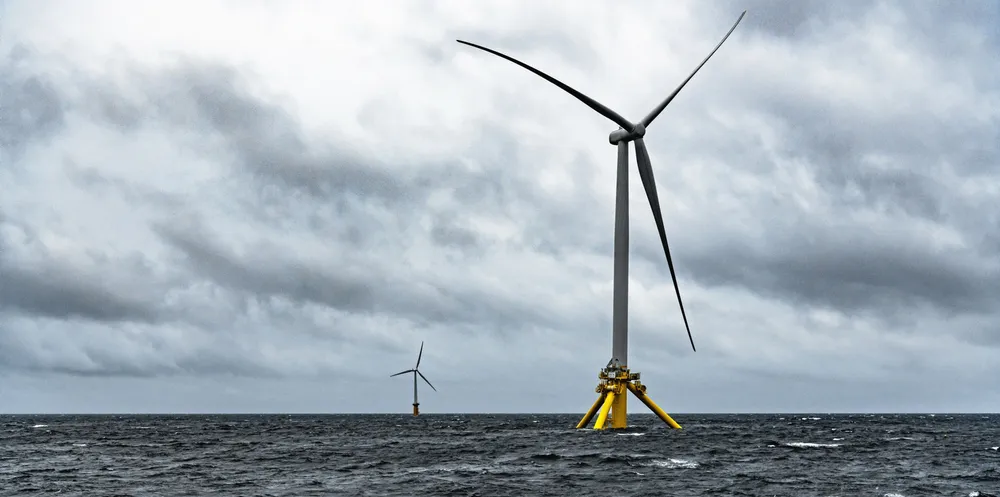'Someone has now shown it can be done': floating wind industrialisation first off Norway
Backed by international energy players Shell, RWE and TEPCO, Stiesdal Offshore Technologies' maiden TetraSpar floating wind unit in North Sea starts flowing power to grid

First power is now flowing to the Norwegian grid from Stiesdal Offshore Technologies’ next-generation floating wind power concept, an “industrialisation-engineered” design backed by international energy players Shell, RWE and TEPCO that was recently installed off the west coast of the Nordic country.
<b>Focus your mind: get the insight you need with the Recharge Agenda</b>
The global energy transition is gathering momentum – and the accompanying news-stream becoming an information deluge. Separate the green giants from the greenwash and the hard facts from the click-bait headlines with Recharge Agenda, our curation of the market-making events of the week, distilled down into one quick-read newsletter. Sign up here for free
The prototype, which flies a Siemens Gamesa 3.6MW machine, is the first to be conceived around factory piece-work with the platforms assembled quayside, mated with turbines and towed-out to site for mooring and commissioning, viewed as a key milestone for a sector shifting toward serial production and deployment in an effort to further cut cost and speed build-out in a number of maritime regions around the world.
“In a way, you could say, much of the feeling was already there when we towed it out to site – because that is when it was demonstrated that the idea of doing things this way in factories worked and that you could ‘ship a unit out’.
“Nonetheless, [commissioning] does feel like a ‘crowning’ of the project. Ultimately it is about the fact that what we set out to do, we ended up doing. That’s very satisfying.”
“You can say this is ‘smart’ and ‘new’ but really it is just about applying the same practices [of component-assembly and construction] as we have for 30 years [with bottom-fixed turbines] offshore and much longer onshore,” Stiesdal says.
“There for me has been a heady feeling during this project that you get playing music, that you are creating something that is much more than the sum of the constituent parts. We had this pleasure in the partnership we built that added skills and competencies to what we had as a technology development. [The prototype now offshore] bears the positive stamp of these extra forces in a way that I never thought would be the case,” he says.
“What we have got from this [with the flagship TetraSpar] is simply a better solution – through collaboration. We could have taken a much more protective or defensive approach [to technology development]. From a more open approach with our investors and partners I believe we now have a much better floating wind ‘product’,” says Stiesdal.
Prototype projects invariably have their share of lessons, and TetraSpar has been “no different in this regard”, he notes, particularly during the home stretch to first power production.
“What is fundamental is that we have proved the industrialised manufacturing part – that worked out completely as expected,” Stiesdal says, citing as a main learning that the offshore installation process “from towing to commissioning… was much greater than we expected but taught us a huge amount about what needs to be done in the way of preparatory work”. By contrast, mooring and the cable-pull from shore “went much faster”.
Through this last phase of the project, he adds, the involvement of Shell – which has decades of experience in offshore installation through its oil & gas fields – RWE and TEPCO with their broad wind and industry experience, and Bourbon – a veteran marine contractor – “lifted the project at this point to a different level and this was of course [especially] reflected when ‘surprises’ came, which they naturally do.”
On one level, these challenges are “wanted”, he adds, as “it is through these ‘troubles’ that you build experience and development greater efficiencies”.
Stiesdal, who started developing TetraSpar as an ‘open source’ project, stresses that his design is not the “single solution” for floating wind, “only proof of an industrialisation model”, adding “I know – I hope – there are people who may at some time outsmart us [with a more economic concept] in the years ahead. And then we will need to sharpen our pencils! We need competition to push innovation and bring down price even further.”
Thomas Brostrøm, Shell’s senior vice president for renewables, said in a statement: “We are extremely proud to have reached this important milestone and to have contributed to the realisation of a truly innovative floating concept.
“Shell is committed to further develop the floating wind industry globally by providing technical and financial support to promising concepts such as Tetraspar.”
TEPCO president Seiichi Fubasami stated: “There are high expectations throughout the world for floating wind. Each stage in the process, from manufacturing and assembly, to launch and deployment, has done well, and we are very excited now to have the demonstrator in operation, thereby reaching an important milestone towards commercial operation of the TetraSpar.”
RWE Renewables offshore wind CEO Sven Utermöhlen called the TetraSpar project “both challenging and inspiring”, saying: “The spark of genius with TetraSpar is its industrialised manufacturing and assembly methodology, which we think is crucial for long-term cost reduction. Our deep involvement in this project means we have now gathered first-hand evidence about how this approach can be scaled up to commercial projects.
“This project has taught us more crucial lessons than we could have ever expected,” Utermöhlen adds.
No end-date has been set for the TetraSpar’s upcoming sea-trial phase moored in 200 metres of water at the MetCentre test centre off Karmøy, although Stiesdal in the past has said the partners would know much of what they needed to about the technology’s industrial viability “after the first winter”.